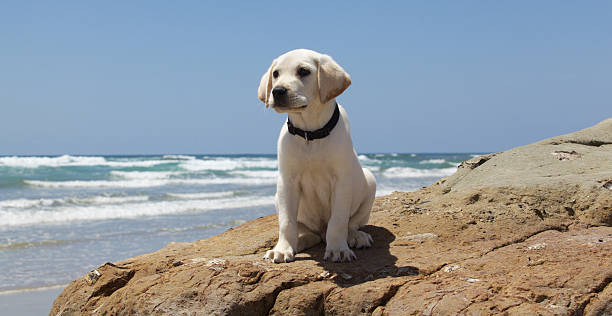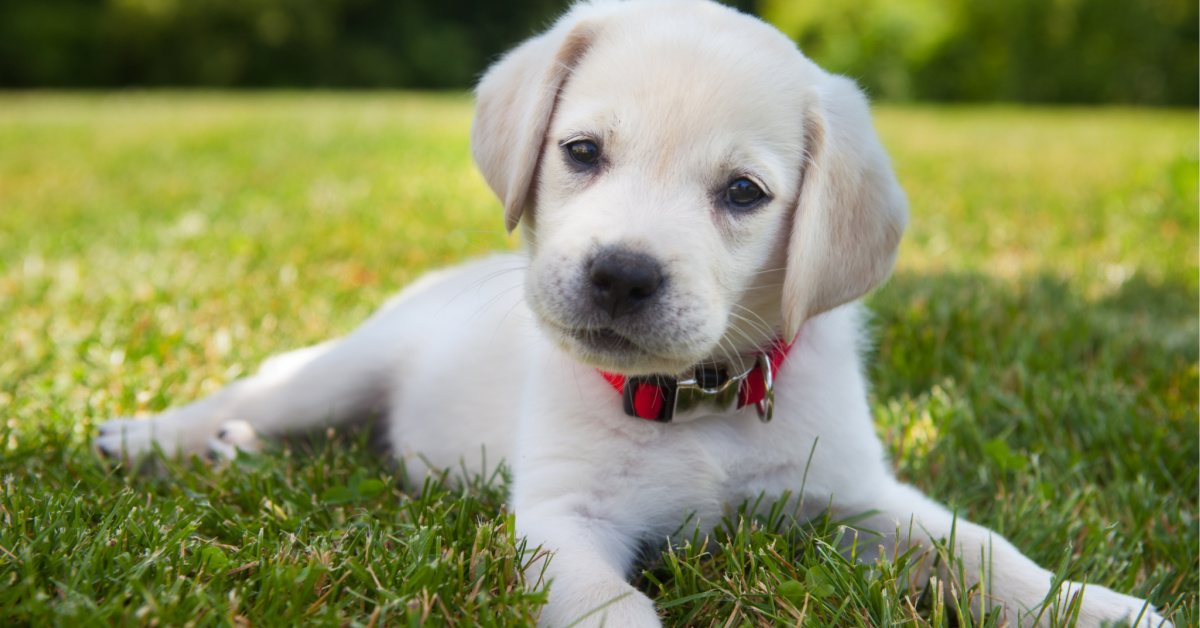Teaching your dog to wave is one of the cutest tricks that you can use to show off your dog’s skill to your friends and family. Even better, the wave track is quite easy to learn if your dog already has the basic commands understood.

This article will talk about a couple of ways that you can teach your dog to wave. Naturally, not every single method is the best one for all dogs.
In many cases, you would find that what works best for others may not necessarily work for your dog. Keeping this mindset is important as training may take some patience and time.
Helpful prerequisites
Before anything else, the wave trick is not a trick that you should try if your dog is not trained in the basic commands such as sit and stay. Being able to control your dog’s movement is important in this trick and is necessary to make the proper movements.
Sit and stay is especially important as you will want your dog to be on their behind the entire time. This will allow them to make the wave action.
Though it is not necessary, it is helpful if your dog already knows the shake or high five cues. These two will help a lot in raising your dog’s hand to do the wave action.
It’s not only the actions themselves but also the discipline necessary to successfully do the trick. In truth, the wave is easy to learn but your dog will need previously learned tricks or cues to be able to practice it with ease.
In short, it’s not for dogs who are just starting out with tricks and do not know sit or stay yet.
The shake method
The first method we will be discussing uses the shake cue to make the process easier. For this method, your dog has to know how to shake hands already.
- Get them to sit and stay
The first step would be to get your dog to sit, and remain in that position. It’s necessary to make sure that they raise their hand and wave properly.
Once they are in the proper beginning position, you can move to step two.
- Ask them to shake your hand
Next, you should command your dog to shake your hand.
Hold out your hand in front of them and say shake or the equivalent cue that you practised with before. Once your dog starts to raise their paw to meet yours. Raise your hand just a little bit so that they’d be grasping at air.
When they successfully follow the movement of your hand. Meaning they bring their paw up higher than they normally would in a shake, that’s already a success. Give them treats and lots of praise when they successfully achieve this.
- Repeat
After the initial cue to shake your hand, you have to keep repeating the request, but bring your hand higher up at each turn. Do not forget to give them treats every time!
The goal in this portion is to get your dog to raise their paw above their heads. At this point, they may not look like they’re waving yet, but just keep at it and it will look great with practice.
Use the cue
This time, when you raise your hand, you should integrate the use of your chosen cue phrase or word. For most people, it’s just a simple ‘wave’ or ‘say hi’.
The phrase you use depends on you, you just have to make certain that it is understandable and easily discernible from other cues.
Make sure to always use the cue when you start to move your hand up. This signifies what the action means and sets an important precedent for the rest of the training process.
Let go of the shake command
When you are confident in your dog’s ability to follow through with the wave cue, you can stop using the shake cue to start them off.
You can immediately say your cue for the wave trick, and in most cases, they will raise their paw above their head. If they don’t yet, you can simply go back to the previous steps and do several more repetitions.
Although this is only a 5-step process, you won’t get to step 5 in a single day. Most likely, it will take a couple of days with short bursts of practice per day.
Exercise patience and manage your expectations. Teaching your dog a trick will be a fun and fulfilling activity, but that doesn’t mean that it won’t take effort and time.
Sit and Stay
Another method to teach your dog to wave is to rely on the sit and stay commands. This method does not require any other tricks other than sit and stay.
- Make them sit and stay
Of course, the first step is to make them sit and stay in that position. They need to have a good grasp of how to stay seated when you instruct before you attempt the next steps.
If your dog is still not fully capable of staying when cued, you have to go back and teach them that first before moving on to this trick.
- Hold up a treat above them
Next, you should hold up a treat to entice them to grab at it. The catch is that they have to completely be in a sitting position even while they are trying to grab the treat.
In this manner, you will be able to replicate the motion of your dog raising their paw above their heads.
It will take some time even to just make your dog sit and stay while they are trying to grab the treat. A possibility is that they will just use their mouth to get at the treat you have in your hand.
- Stay
However, you have to ensure that they are staying in position and you must assert the stay command at all times. If they start to break away and move from the sitting position, move your hand away and start over.
Once they start using their paws to grab at the treat, you can praise them and give them the treat. Do this repeatedly until your dog is able to raise its paw successfully.
Insert a cue
As your dog is starting to grab at the treat with their paw, you can start to integrate the cue phrase while they are performing the movement.
As with the other steps, you should repeat this several times until it becomes clear that your dog understands the purpose of the cue and can perform it efficiently.
What to remember
Teaching your dog new tricks should be a fun and fulfilling experience. Yes, it will take time and lots of effort, but it shouldn’t be stressful at all.
To help with that, you should keep training sessions short and fun. Don’t drag on the sessions for more than a handful of minutes each time as your dog’s attention will suffer from this.
It is also important to understand your dog’s body language well. According to the proponents of this study, understanding your dog’s emotions during training will help so that you will be able to respond properly, and thus make the training easier.
To many, a dog waving is just a truck to show off for friends or parties. But teaching them tricks provides an experience much richer than just that.






